
 Home
Galleries
N-1 Rocket
Tutorials
Articles
Email Me
Home
Galleries
N-1 Rocket
Tutorials
Articles
Email Me
Differences between N-
It is often difficult to conclusively identify which variant N-
Before we start though, there is a very important fact to remember.
THERE IS NO GREEN ANYWHERE ON THE HULL OF ANY N-
I don’t know exactly where this started -
First launch vehicle, N1-

The first N-
The N1-
In the factory it is shown with a large block of telemetry equipment at the top of the Stage 1 / Block A skirt.
Also note that the tops of the fuel tanks, visible through the interstage, are dark grey like the hull. The grid fins are black, in a light grey frame.
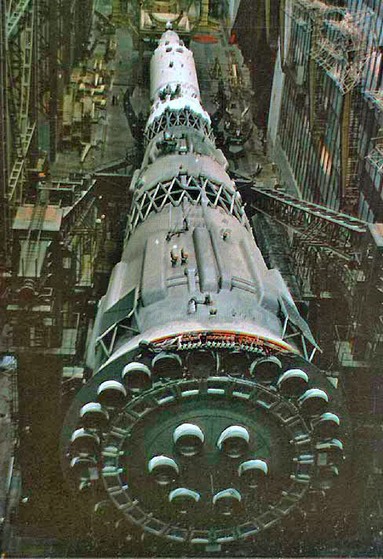
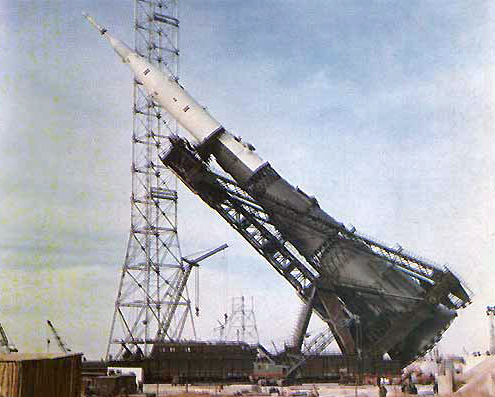
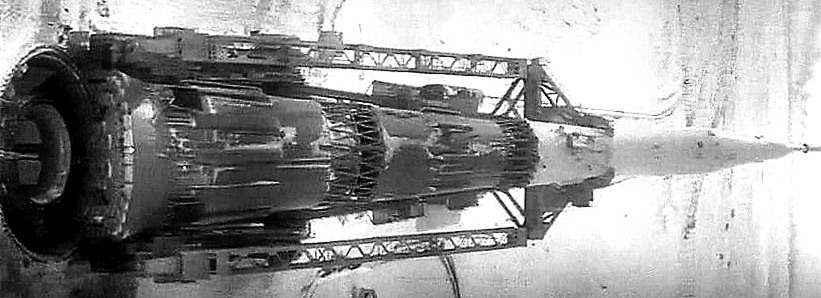
N1-
N1-
Second launch vehicle, N1-
N1-

The second N-
The N1-
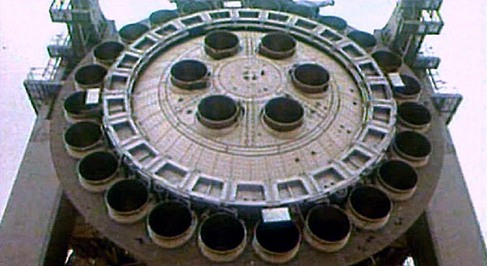
The distinctive heat shield on the base of the N1-
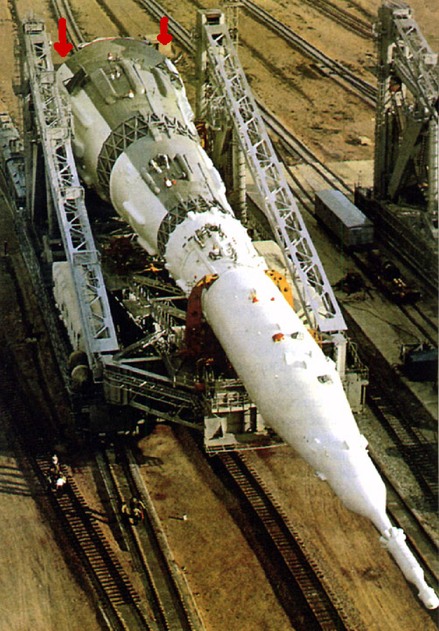
N1-
Breadboard, N1-
This was the full size “model” used to test the pad facilities. It is best seen in some of the more famous photos of two N1’s on the pads, one is the 5L and one is the 1M. The model was used for other testing though, so there are photos of it looking like other variants. Colour wise, (and in general), it looked like whichever model was being prepared for flight. It is sometimes called the 'weight model' or the 'breadboard model'.
The good news is that this variant is very easy to spot, as it has no escape system on top of the rocket, just a short ‘stalk’.
There was also a heat shield added to the top of the first stage fuel tank, to protect it from the ignition of the second stage, which started up just before the first stage was finished, to keep the fuel settled. (This is why so many Soviet and Russian rockets have an open interstage. The Saturn V used a separate set of small motors called "ullage motors".
Again there are two heat shields, again the grid fins are black in a light grey frame.
The top of the first two fuels tanks are again dark grey, matching the darker hull areas.
Third launch vehicle, N1-
The third N1 to launch is easily confused with the second, and at first glance it looks the same.
Again the hull is mainly white but with a darker sector – but this time the dark sector is 120 degrees wide, not 90. Look to see if the border between light and dark sections runs directly through the centre line of the grid fins – if it does not, it’s the 6L.
Again the darker section is towards the gantry, making it hard to see from some angles.
The main visible structural difference is on the first stage. The fuel line covers are different, being cut off and mostly open at the bottom. An oblong structure is inserted up here, with a distinct gap around the edge. This is a fire extinguisher system.
Again there are two heat shields, again the grid fins are black in a grey frame.
The top of the first two fuels tanks are again dark grey, matching the darker hull areas.


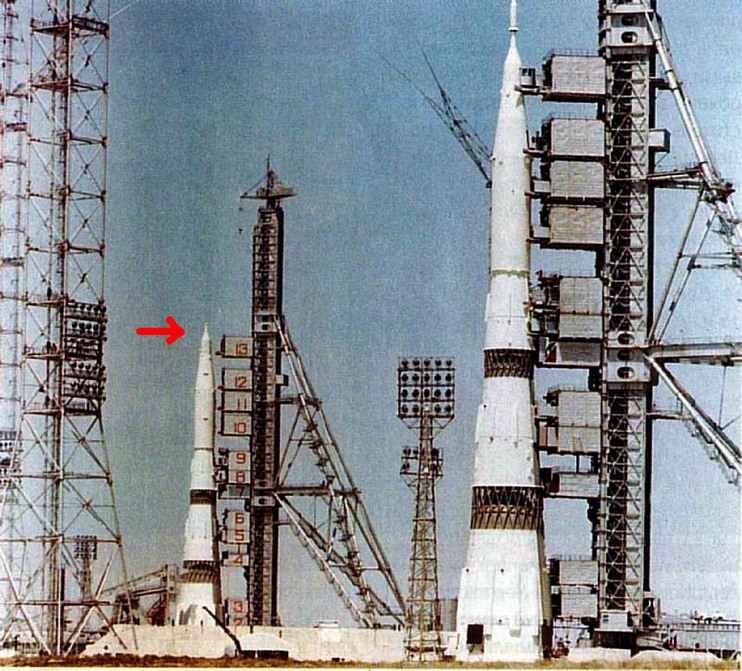
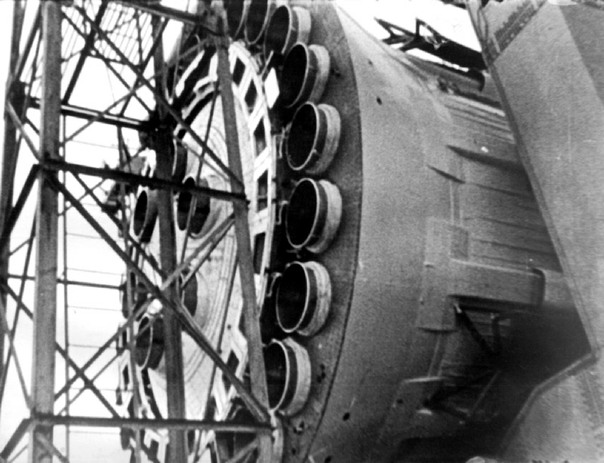
Base of the N1-
Fourth launch vehicle, N1-
The final flight version of the N1 has some major structural differences, reflecting the large amount of work done to improve performance and reliability.
The hull is 100% white. (The move towards white hulls was to help with temperature control).
The fire extinguisher system is not visible, and the fuel line covers are now closer to the hull, and streamlined. They are noticeably pointy at the top, on all the first three stages / blocks. This is very obvious, and makes the 7L very easy to identify from any angle.
The lower skirt on the First Stage / Block A no longer flares out, but is narrower, and vertical. This is too improve the flow around the lower area.
There are two protruding lumps on the edge of where the telemetry block was connected, holding more compact telemetry devices.
The visible parts of the fuel tank are now painted white, and the grid fins are black in a white frame. As with all versions after the 3L, there is a heat shield on the base, and on the top of the first stage.

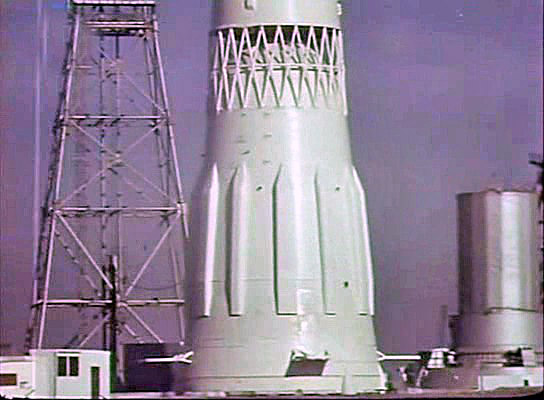
N1-
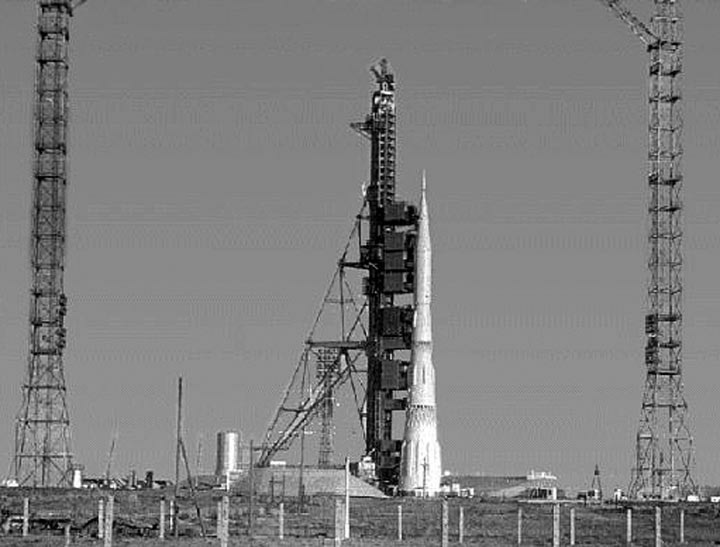
N1-
 Home
Galleries
N-1 Rocket
Tutorials
Articles
Email Me
Home
Galleries
N-1 Rocket
Tutorials
Articles
Email Me

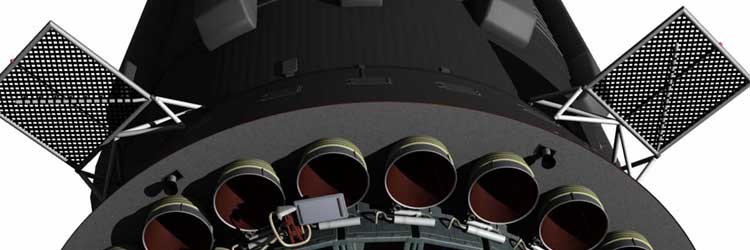
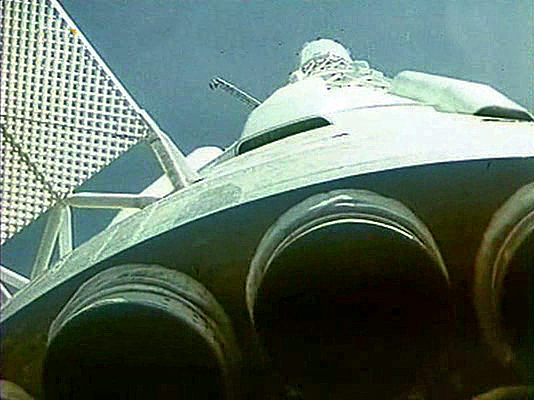
And this great shot from directly under the N1-